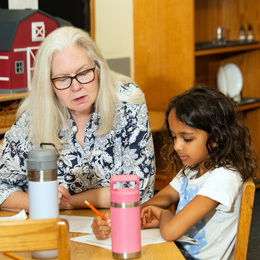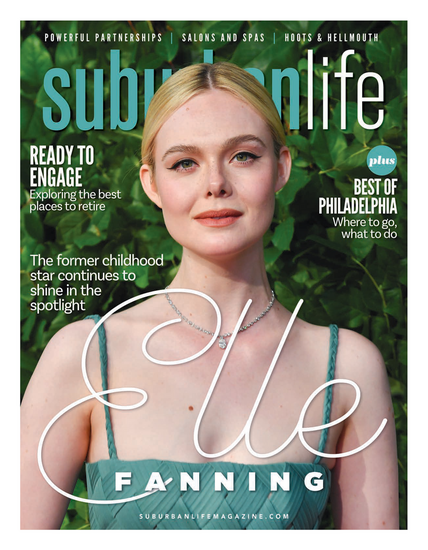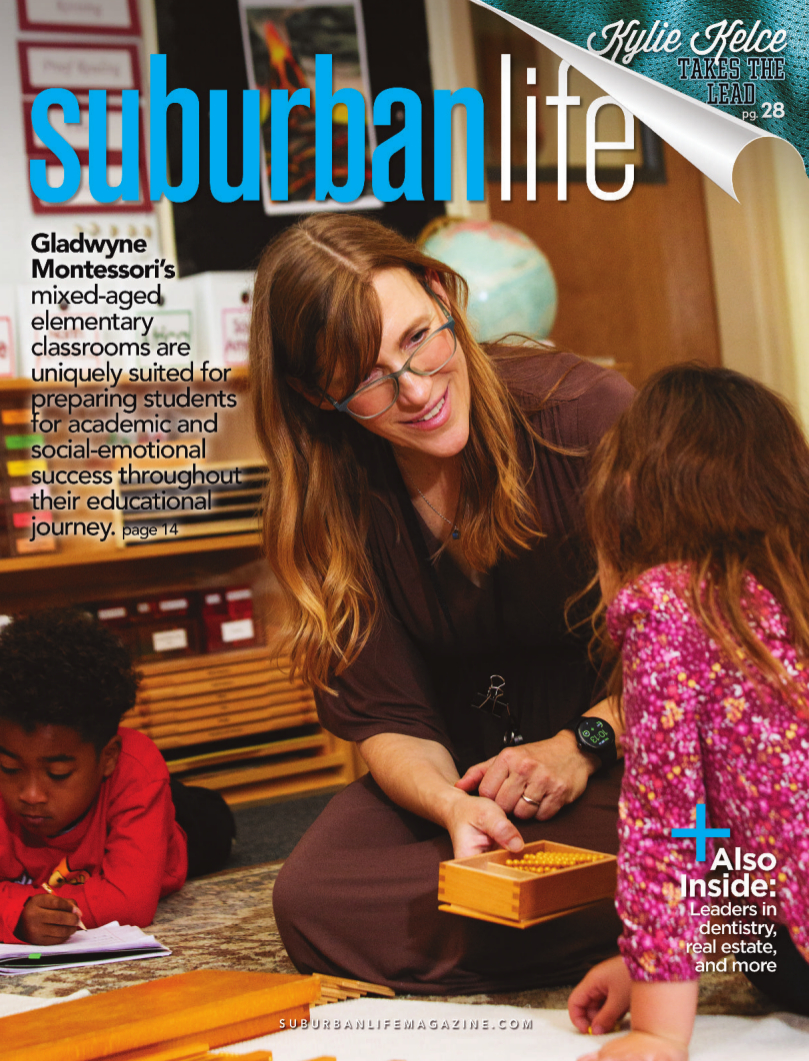
In 2020, Farah Khan and her family relocated from their home in Philadelphia to the Main Line. They were happy with the move, though they had some concern about replicating the progress their children made while attending a Montessori school in the city.
When they explored Gladwyne Montessori, a 15-minute drive from their new home, they immediately liked what they saw. Today, all three of their children – son Zakariya, the oldest at 10; and two daughters, Khadija and Somaya, ages seven and five, respectively – attend Gladwyne Montessori.
“We like the Montessori system because it meets kids where they’re at, whether they are behind or ahead,” Khan says. “It’s a nourishing environment, and it’s worked well for all our kids so far.”
Founded in 1962, Gladwyne Montessori provides an educational model that inspires children, ages six weeks to 12 years, to find joy in learning. The school’s approach combines the visionary insights of its namesake, the Italian physician and educator Dr. Maria Montessori, with modern research in education and child development. Its mission: to shape children into confident, curious, and engaged learners who are prepared to live and lead in the 21st century.
Montessori schools tend to be well known for their expertise in guiding the youngest learners, such as infants, toddlers, and those in kindergarten; it’s perhaps lesser known for the depth and breadth of its program for elementary-aged learners. Parents like Khan have discovered that Gladwyne Montessori’s elementary program reinforces the confidence and curiosity students develop through the primary program, challenging students to apply these skills through critical thinking and in-depth research on topics introduced in the classroom.
She has been delighted by the progress Zakariya has made at the school. She appreciates the fact that faculty members are trained to deliver curricula in three-year cycles, and that each classroom includes students of varying ages, but at similar stages of development.
In a classroom with a three-year cycle, younger students, or “first years,” can watch and learn from older students, seeing the progress they will soon make. This naturally motivates them to work hard and learn, knowing they will eventually become the classroom leaders. For the older students, it is a chance to share what they have learned by helping teach the younger ones, which also strengthens their own understanding.
“Our son just started in the upper elementary program,” Khan says. “We were considering sending him to public school, but a teacher told us he would be bored because he’s advanced in reading and math. He seems very happy where he is. He’s very math and science oriented; one of his favorite things is using the school’s makerspace to create things.”
In addition to direct instruction, the Montessori model allows for personal discovery, the freedom to choose one’s path within limits, and respect a child’s natural development. Most lessons involve either individualized learning or collaborative problem solving in smaller groups.
Early on Khan had a minor concern about the intimate size of Zakariya’s class, only because she thought Zakariya might not get the socialization he would need to thrive later in life. Her concern quickly faded.
“The three-year cycle lets them develop a bond with their teachers and other students, as opposed to other schools where kids are constantly switching in and out,” she says. “My son met his best friend [in school] as a four-year-old, and to this day they’re still in the same classroom. They challenge each other.”
Elementary teachers such as Cammy Russell play a pivotal role in each student’s progress.
“Being a Montessori teacher takes a certain flexibility and openness,” says Russell, a lower elementary teacher and coordinator of the school’s elementary department. “You have to be a keen observer as well as a bit of a scientist, because you have to engage with all different learning modalities. I like the idea that there’s not one right way to do things, a certain openness to difference and diversity in ways of thinking and developmental paths, and different ways to solve a problem.”
Russell believes the elementary program is uniquely suited to preparing students for the next phase of their education. More to the point, she believes it gives them the tools they need to become lifelong learners. Not only is she a teacher, but she also has the informed perspective of a parent. Both of her two daughters attended Gladwyne Montessori – her oldest, from fourth through sixth grades, and her youngest, from second through sixth.
“I look at the fact that students are able to learn practical life skills like time management and self-direction so they can be more of an active participant in their education,” she says. “Montessori is about freedom within responsibility. The end goal is always independence, because that’s what they will need in the world.
“There’s a lot of social and emotional learning that happens here,” she continues. “The elementary years are such an important time in a child’s development. If they’re not feeling comfortable socially, they’re not going to devote enough energy to academic learning. It’s best to learn those skills here rather than when they’re older. I can get them to impressive places academically, but it’s also the practical life skills and social-emotional learning, which are not offered as much elsewhere.”
To illustrate, she cites the five “great lessons” – stories she tells at the beginning of each school year that provide a framework for all other lessons to follow: the story of the universe, the story of life, the story of humans, the story of the alphabet, and the story of numbers.
“Each of these lessons serves as a touchstone; they provide context and allow for cross-curricular connections,” she says. “There’s an idea here that we are part of a bigger system, something bigger than ourselves, and every part of it plays a role. Through these stories, we learn to be grateful to those who came before us, for what they contributed. The unspoken part of that gets them thinking about the question of: What am I going to contribute?”
This speaks to an aspect of the Montessori method known as the “cosmic task,” the idea that everything in the universe – including each student – contributes to the greater good. Russell, who studied anthropology and biology at the University of Delaware, identified her cosmic task long ago: teaching and inspiring children to see the world as a wondrous place they want to learn about, study, and cherish.
The purpose and passion of elementary teachers like Russell make all the difference in students’ lives. Farah Khan has watched her son progress, both socially and academically, to the point where she feels confident he will have a seamless transition to the next phase of his education. As her two daughters approach the elementary years at Gladwyne Montessori, she expects them to have the same positive experience as their brother.
Gladwyne Montessori
920 Youngsford Road
Gladwyne, PA 19035
(610) 649-1761
www.gladwyne.org
Photo by Alison Dunlap
Published (and copyrighted) in Suburban Life magazine, September 2024.



